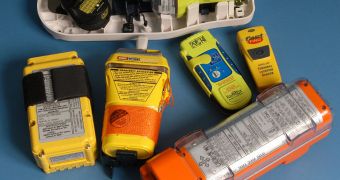The American space agency is credited with saving the lives of no less than 27,000 people over the course of 30 years, statistics show. The organization set up the foundation for the satellite-based search-and-rescue system that is currently being used by rescue workers to save victims of various disasters, natural or man-made. After spending so much time as a leader in this sort of technologies, NASA reaffirms its position through the development of a new search-and-rescue system that could help save even more lives.
Working in cooperation with a large number of other government organizations in the United States, NASA is currently working on putting the finishing touches on its Distress Alerting Satellite System (DASS). The innovation will be based on a yet-to-be-launched satellite constellation, which will have a lot more coverage than existing systems. This next-generation approach to conducting rescue operations is designed in collaboration with the US National Oceanic and Atmospheric Administration (NOAA), the US Air Force, and the US Coast Guard, among others.
The DASS will have tremendous capabilities, its developers say. For example, it will be able to pick up and analyze signals coming from 406 megahertz (MHz) beacons almost instantly, pointing rescue workers in the right direction. This ability will also allow for emergency crews to work in a safer environment than ever before, as they will have a lot more data to guide themselves by once they arrive at a scene. The beacons will be installed on ships, aircrafts, and could also be carried by individuals, such as for example those traveling on dangerous mountains, where there is a constant high risk of avalanches being triggered.
“DASS technology is the future of international satellite-aided search and rescue. A few years ago, we looked to see how we could improve the system and we concluded that the international search and rescue community would benefit from new technology installed on GPS. We would be able to identify distress signals faster and with a greater level of precision. In the end, this will save more lives, reduce risk to rescuers, and save money because less time will be spent searching,” explains the NASA Search and Rescue mission manager, David Affens.

 14 DAY TRIAL //
14 DAY TRIAL //